“Star Wars Return of the Jedi – The Illustrated Edition First edition vintage trade novel 1983” has been added to your cart. View cart
Add to Wishlist
Analog Science Fact Fiction Magazine October 1964 Frank Herbert Short Story
$13.00
This is a “good plus” vintage magazine published in 1964, 96 pages.
Binding is tight, not coming apart, no loose, torn or folded pages, no writing or marks. Some edge wear on covers, light creasing.
Cover art by Robert Swanson.
See images for full condition details and table of contents.
Will ship promptly, carefully packaged.
1 in stock
Ships in 1 to 3 business days, carefully packaged, every shipment with tracking.
SKU:
asfsfoct64
Categories:
Vintage Sci Fi Pulps & Mags, Vintage Science Fiction
Tags:
Future stories, Mack Reynolds
Additional information
| Weight | .5 oz |
|---|---|
| Dimensions | 12 × 9 × 1 in |
Be the first to review “Analog Science Fact Fiction Magazine October 1964 Frank Herbert Short Story” Cancel reply
Related products
Vintage Analog Science Fiction Magazine – November 1965 – Kelly Freas Cover
$8.00
This is really nice 60 year old pulp magazine, complete.
No reading creases, not dog eared, no writing or tears or labels. Some discoloration to white border front cover. Back cover upper corner at spine is chipped; closes tightly, staples/binding not stressed. Stories from H. Beam Piper and John Brunner See second image for complete table of contents. Kelly Freas cover art, more Freas and John Schoenherr artwork inside. Will ship promptly, carefully packaged.
No reading creases, not dog eared, no writing or tears or labels. Some discoloration to white border front cover. Back cover upper corner at spine is chipped; closes tightly, staples/binding not stressed. Stories from H. Beam Piper and John Brunner See second image for complete table of contents. Kelly Freas cover art, more Freas and John Schoenherr artwork inside. Will ship promptly, carefully packaged.
Vintage Analog Science Fiction Magazine – November 1965 – Kelly Freas Cover
$8.00
This is really nice 60 year old pulp magazine, complete.
No reading creases, not dog eared, no writing or tears or labels. Some discoloration to white border front cover. Back cover upper corner at spine is chipped; closes tightly, staples/binding not stressed. Stories from H. Beam Piper and John Brunner See second image for complete table of contents. Kelly Freas cover art, more Freas and John Schoenherr artwork inside. Will ship promptly, carefully packaged.
No reading creases, not dog eared, no writing or tears or labels. Some discoloration to white border front cover. Back cover upper corner at spine is chipped; closes tightly, staples/binding not stressed. Stories from H. Beam Piper and John Brunner See second image for complete table of contents. Kelly Freas cover art, more Freas and John Schoenherr artwork inside. Will ship promptly, carefully packaged.
Sci-Fi Chess Novel: The Squares of the City by John Brunner, 1978 Edition
This is a "very good" or better vintage 1978 Ballantine paperback novel by John Brunner, Hugo-nominated when it first appeared in print in 1965.
Crisp, solid copy, with an uncreased spine. No marks or writing, no loose, torn or folded pages. Text and covers are square and close tightly. Text block edges are uniform, not rubbed or soiled, bright all around. Covers show some minimal surface wear. Very pleasing overall. Somewhat scarce title. Really nice vintage copy! See accompanying images for full condition details. Enter John Brunner's Hugo-nominated masterpiece, The Squares of the City, where every citizen is a chess piece in a deadly game of power and control.... In the gleaming planned metropolis of Ciudad de Vados, capital of the fictional South American nation Aguazul, traffic analyst Boyd Hakluyt arrives to solve what seems like a routine urban planning problem. Instead, he finds himself trapped in a meticulously orchestrated conflict where the 1892 World Chess Championship match between Wilhelm Steinitz and Mikhail Chigorin is being played out with human lives. The city's elite, led by the enigmatic President Vados, use subliminal messaging and media manipulation to control the population, while the impoverished native residents fight to reclaim their land and dignity. As Hakluyt navigates between the sophisticated chess-obsessed ruling class and the desperate slum dwellers, he discovers that every death, every political maneuver, every act of resistance corresponds to an actual move in the historic chess game. Brunner's brilliant structural experiment transforms a political thriller into a profound meditation on colonialism, urban planning, and the ethics of social engineering. This 1978 edition captures Brunner at his most innovative, blending Graham Greene-style intrigue with cutting-edge social commentary that remains startlingly relevant to our modern debates about gentrification, surveillance, and the price of progress. Will ship promptly, carefully packaged.
Crisp, solid copy, with an uncreased spine. No marks or writing, no loose, torn or folded pages. Text and covers are square and close tightly. Text block edges are uniform, not rubbed or soiled, bright all around. Covers show some minimal surface wear. Very pleasing overall. Somewhat scarce title. Really nice vintage copy! See accompanying images for full condition details. Enter John Brunner's Hugo-nominated masterpiece, The Squares of the City, where every citizen is a chess piece in a deadly game of power and control.... In the gleaming planned metropolis of Ciudad de Vados, capital of the fictional South American nation Aguazul, traffic analyst Boyd Hakluyt arrives to solve what seems like a routine urban planning problem. Instead, he finds himself trapped in a meticulously orchestrated conflict where the 1892 World Chess Championship match between Wilhelm Steinitz and Mikhail Chigorin is being played out with human lives. The city's elite, led by the enigmatic President Vados, use subliminal messaging and media manipulation to control the population, while the impoverished native residents fight to reclaim their land and dignity. As Hakluyt navigates between the sophisticated chess-obsessed ruling class and the desperate slum dwellers, he discovers that every death, every political maneuver, every act of resistance corresponds to an actual move in the historic chess game. Brunner's brilliant structural experiment transforms a political thriller into a profound meditation on colonialism, urban planning, and the ethics of social engineering. This 1978 edition captures Brunner at his most innovative, blending Graham Greene-style intrigue with cutting-edge social commentary that remains startlingly relevant to our modern debates about gentrification, surveillance, and the price of progress. Will ship promptly, carefully packaged.
Sci-Fi Chess Novel: The Squares of the City by John Brunner, 1978 Edition
This is a "very good" or better vintage 1978 Ballantine paperback novel by John Brunner, Hugo-nominated when it first appeared in print in 1965.
Crisp, solid copy, with an uncreased spine. No marks or writing, no loose, torn or folded pages. Text and covers are square and close tightly. Text block edges are uniform, not rubbed or soiled, bright all around. Covers show some minimal surface wear. Very pleasing overall. Somewhat scarce title. Really nice vintage copy! See accompanying images for full condition details. Enter John Brunner's Hugo-nominated masterpiece, The Squares of the City, where every citizen is a chess piece in a deadly game of power and control.... In the gleaming planned metropolis of Ciudad de Vados, capital of the fictional South American nation Aguazul, traffic analyst Boyd Hakluyt arrives to solve what seems like a routine urban planning problem. Instead, he finds himself trapped in a meticulously orchestrated conflict where the 1892 World Chess Championship match between Wilhelm Steinitz and Mikhail Chigorin is being played out with human lives. The city's elite, led by the enigmatic President Vados, use subliminal messaging and media manipulation to control the population, while the impoverished native residents fight to reclaim their land and dignity. As Hakluyt navigates between the sophisticated chess-obsessed ruling class and the desperate slum dwellers, he discovers that every death, every political maneuver, every act of resistance corresponds to an actual move in the historic chess game. Brunner's brilliant structural experiment transforms a political thriller into a profound meditation on colonialism, urban planning, and the ethics of social engineering. This 1978 edition captures Brunner at his most innovative, blending Graham Greene-style intrigue with cutting-edge social commentary that remains startlingly relevant to our modern debates about gentrification, surveillance, and the price of progress. Will ship promptly, carefully packaged.
Crisp, solid copy, with an uncreased spine. No marks or writing, no loose, torn or folded pages. Text and covers are square and close tightly. Text block edges are uniform, not rubbed or soiled, bright all around. Covers show some minimal surface wear. Very pleasing overall. Somewhat scarce title. Really nice vintage copy! See accompanying images for full condition details. Enter John Brunner's Hugo-nominated masterpiece, The Squares of the City, where every citizen is a chess piece in a deadly game of power and control.... In the gleaming planned metropolis of Ciudad de Vados, capital of the fictional South American nation Aguazul, traffic analyst Boyd Hakluyt arrives to solve what seems like a routine urban planning problem. Instead, he finds himself trapped in a meticulously orchestrated conflict where the 1892 World Chess Championship match between Wilhelm Steinitz and Mikhail Chigorin is being played out with human lives. The city's elite, led by the enigmatic President Vados, use subliminal messaging and media manipulation to control the population, while the impoverished native residents fight to reclaim their land and dignity. As Hakluyt navigates between the sophisticated chess-obsessed ruling class and the desperate slum dwellers, he discovers that every death, every political maneuver, every act of resistance corresponds to an actual move in the historic chess game. Brunner's brilliant structural experiment transforms a political thriller into a profound meditation on colonialism, urban planning, and the ethics of social engineering. This 1978 edition captures Brunner at his most innovative, blending Graham Greene-style intrigue with cutting-edge social commentary that remains startlingly relevant to our modern debates about gentrification, surveillance, and the price of progress. Will ship promptly, carefully packaged.
For the Sci Fi Fan “I, Robot” Vintage paperback Isaac Asimov 1970 printing
$14.00
This is a "very good" vintage 1970 Fawcett paperback, short story collection by Isaac Asimov.
Mild edge and surface wear on covers, very minimal signs of reading use. Text block is square, closes tightly. A date stamp on the outer text block edge, reading "Apr 28 1975" - likely from a used book store back in the day. A very subtle crease in the spine, not color breaking. Original cover price on front cover and spine blacked out, otherwise no marks or writing. No loose, torn or folded pages. Very presentable 55 year old vintage paperback! Really nice vintage copy! See accompanying images for full condition details. Enter the groundbreaking world of Isaac Asimov's I, Robot, the seminal 1950 collection that forever changed how we imagine artificial intelligence. Through nine interconnected short stories framed by the reminiscences of Dr. Susan Calvin, the pioneering robopsychologist at U.S. Robots and Mechanical Men, Asimov introduces his revolutionary Three Laws of Robotics—the ethical framework that would influence science fiction for generations. From "Robbie," the gentle nursemaid robot who forms an unbreakable bond with a young girl, to the chilling implications of "The Evitable Conflict," where super-intelligent Machines quietly manipulate humanity's future, each tale explores the complex moral landscape where human and artificial minds intersect. Meet Speedy, trapped in a logical loop on Mercury; Herbie, the telepathic robot driven to madness by conflicting imperatives; and Stephen Byerley, the politician whose humanity itself becomes the central mystery. Asimov's robots aren't the rampaging monsters of pulp fiction—they're thoughtful, sometimes flawed beings whose dilemmas mirror our own deepest questions about consciousness, free will, and what it truly means to be human. This vintage collection remains startlingly relevant as we stand on the threshold of real artificial intelligence, making it essential reading for anyone fascinated by the ethical challenges of our technological future. Will ship promptly, carefully packaged.
Mild edge and surface wear on covers, very minimal signs of reading use. Text block is square, closes tightly. A date stamp on the outer text block edge, reading "Apr 28 1975" - likely from a used book store back in the day. A very subtle crease in the spine, not color breaking. Original cover price on front cover and spine blacked out, otherwise no marks or writing. No loose, torn or folded pages. Very presentable 55 year old vintage paperback! Really nice vintage copy! See accompanying images for full condition details. Enter the groundbreaking world of Isaac Asimov's I, Robot, the seminal 1950 collection that forever changed how we imagine artificial intelligence. Through nine interconnected short stories framed by the reminiscences of Dr. Susan Calvin, the pioneering robopsychologist at U.S. Robots and Mechanical Men, Asimov introduces his revolutionary Three Laws of Robotics—the ethical framework that would influence science fiction for generations. From "Robbie," the gentle nursemaid robot who forms an unbreakable bond with a young girl, to the chilling implications of "The Evitable Conflict," where super-intelligent Machines quietly manipulate humanity's future, each tale explores the complex moral landscape where human and artificial minds intersect. Meet Speedy, trapped in a logical loop on Mercury; Herbie, the telepathic robot driven to madness by conflicting imperatives; and Stephen Byerley, the politician whose humanity itself becomes the central mystery. Asimov's robots aren't the rampaging monsters of pulp fiction—they're thoughtful, sometimes flawed beings whose dilemmas mirror our own deepest questions about consciousness, free will, and what it truly means to be human. This vintage collection remains startlingly relevant as we stand on the threshold of real artificial intelligence, making it essential reading for anyone fascinated by the ethical challenges of our technological future. Will ship promptly, carefully packaged.
For the Sci Fi Fan “I, Robot” Vintage paperback Isaac Asimov 1970 printing
$14.00
This is a "very good" vintage 1970 Fawcett paperback, short story collection by Isaac Asimov.
Mild edge and surface wear on covers, very minimal signs of reading use. Text block is square, closes tightly. A date stamp on the outer text block edge, reading "Apr 28 1975" - likely from a used book store back in the day. A very subtle crease in the spine, not color breaking. Original cover price on front cover and spine blacked out, otherwise no marks or writing. No loose, torn or folded pages. Very presentable 55 year old vintage paperback! Really nice vintage copy! See accompanying images for full condition details. Enter the groundbreaking world of Isaac Asimov's I, Robot, the seminal 1950 collection that forever changed how we imagine artificial intelligence. Through nine interconnected short stories framed by the reminiscences of Dr. Susan Calvin, the pioneering robopsychologist at U.S. Robots and Mechanical Men, Asimov introduces his revolutionary Three Laws of Robotics—the ethical framework that would influence science fiction for generations. From "Robbie," the gentle nursemaid robot who forms an unbreakable bond with a young girl, to the chilling implications of "The Evitable Conflict," where super-intelligent Machines quietly manipulate humanity's future, each tale explores the complex moral landscape where human and artificial minds intersect. Meet Speedy, trapped in a logical loop on Mercury; Herbie, the telepathic robot driven to madness by conflicting imperatives; and Stephen Byerley, the politician whose humanity itself becomes the central mystery. Asimov's robots aren't the rampaging monsters of pulp fiction—they're thoughtful, sometimes flawed beings whose dilemmas mirror our own deepest questions about consciousness, free will, and what it truly means to be human. This vintage collection remains startlingly relevant as we stand on the threshold of real artificial intelligence, making it essential reading for anyone fascinated by the ethical challenges of our technological future. Will ship promptly, carefully packaged.
Mild edge and surface wear on covers, very minimal signs of reading use. Text block is square, closes tightly. A date stamp on the outer text block edge, reading "Apr 28 1975" - likely from a used book store back in the day. A very subtle crease in the spine, not color breaking. Original cover price on front cover and spine blacked out, otherwise no marks or writing. No loose, torn or folded pages. Very presentable 55 year old vintage paperback! Really nice vintage copy! See accompanying images for full condition details. Enter the groundbreaking world of Isaac Asimov's I, Robot, the seminal 1950 collection that forever changed how we imagine artificial intelligence. Through nine interconnected short stories framed by the reminiscences of Dr. Susan Calvin, the pioneering robopsychologist at U.S. Robots and Mechanical Men, Asimov introduces his revolutionary Three Laws of Robotics—the ethical framework that would influence science fiction for generations. From "Robbie," the gentle nursemaid robot who forms an unbreakable bond with a young girl, to the chilling implications of "The Evitable Conflict," where super-intelligent Machines quietly manipulate humanity's future, each tale explores the complex moral landscape where human and artificial minds intersect. Meet Speedy, trapped in a logical loop on Mercury; Herbie, the telepathic robot driven to madness by conflicting imperatives; and Stephen Byerley, the politician whose humanity itself becomes the central mystery. Asimov's robots aren't the rampaging monsters of pulp fiction—they're thoughtful, sometimes flawed beings whose dilemmas mirror our own deepest questions about consciousness, free will, and what it truly means to be human. This vintage collection remains startlingly relevant as we stand on the threshold of real artificial intelligence, making it essential reading for anyone fascinated by the ethical challenges of our technological future. Will ship promptly, carefully packaged.
Sale
Vintage science fiction pulp mag Unread copy “Science Fiction Adventure Classics” July 1972 Sheer Kostcos Smith and more
CONDITION: This is an unread magazine purchased from a dealer who bought out thousands of overstock copies from a warehouse of the publisher. It shows some storage and aging signs, but obviously has not been handled to read. This is a very crisp issue.
See accompanying images for full condition details. Super cool, unique find. Will ship promptly, carefully packaged.
See accompanying images for full condition details. Super cool, unique find. Will ship promptly, carefully packaged.
Sale
Vintage science fiction pulp mag Unread copy “Science Fiction Adventure Classics” July 1972 Sheer Kostcos Smith and more
CONDITION: This is an unread magazine purchased from a dealer who bought out thousands of overstock copies from a warehouse of the publisher. It shows some storage and aging signs, but obviously has not been handled to read. This is a very crisp issue.
See accompanying images for full condition details. Super cool, unique find. Will ship promptly, carefully packaged.
See accompanying images for full condition details. Super cool, unique find. Will ship promptly, carefully packaged.
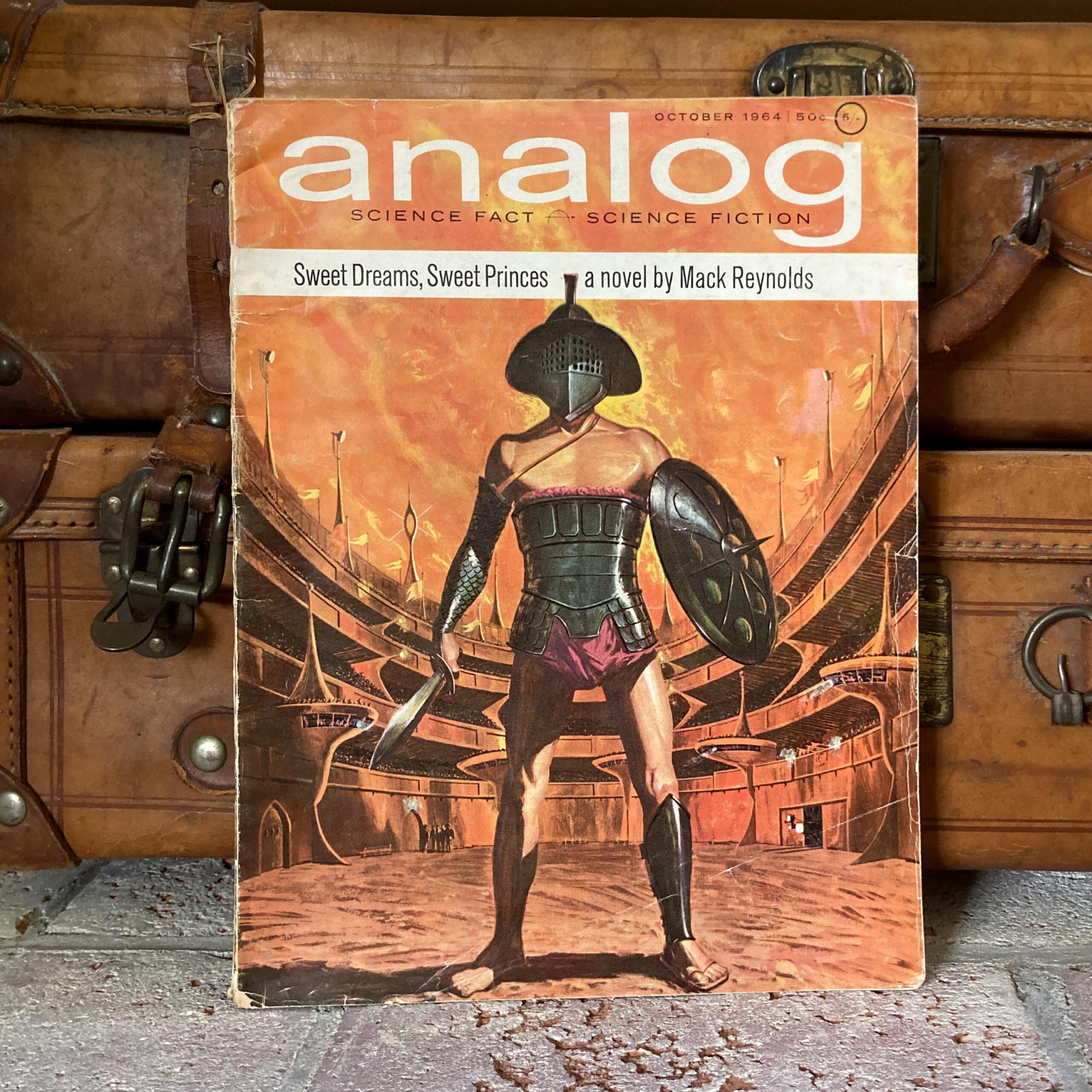


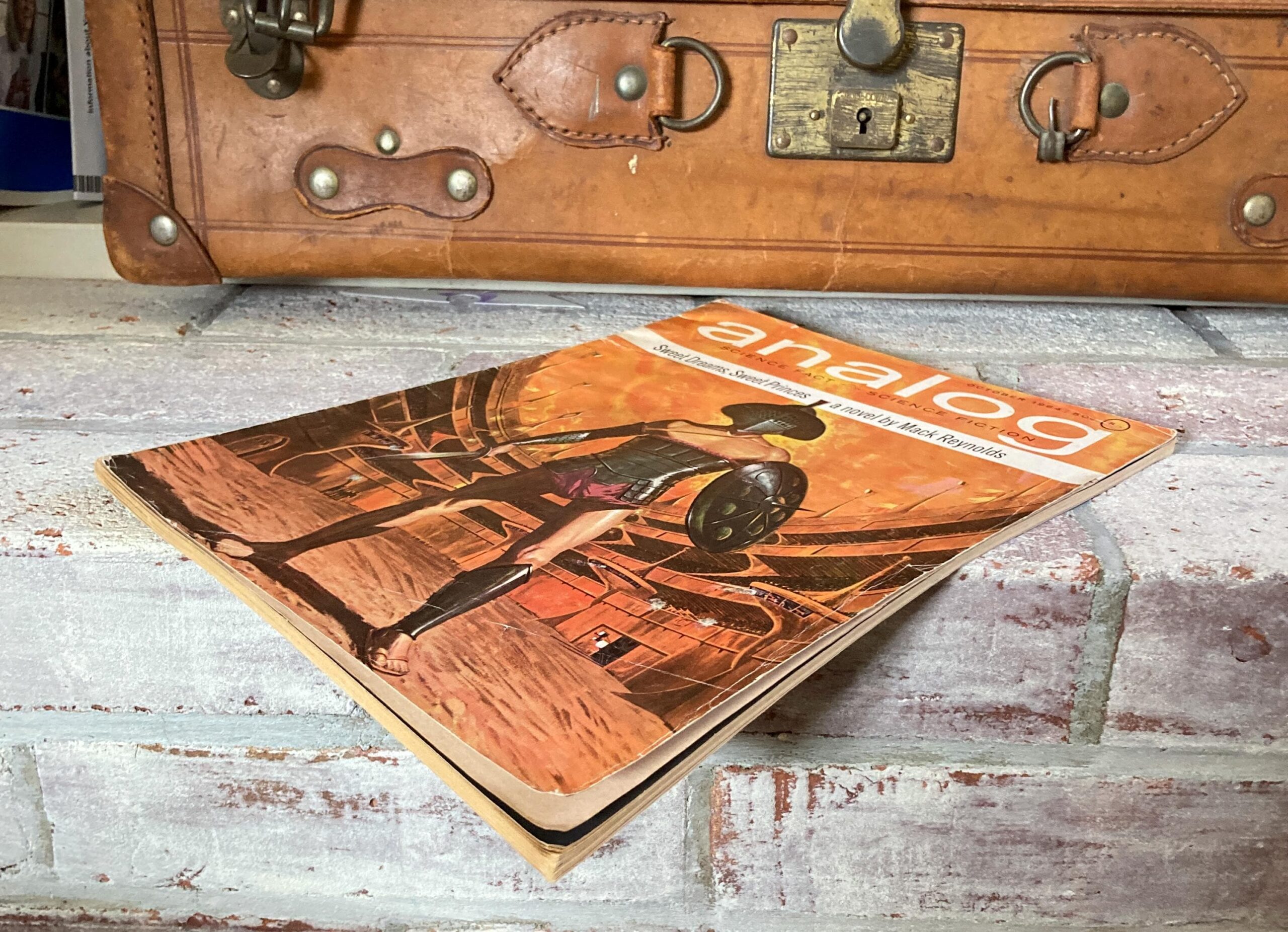
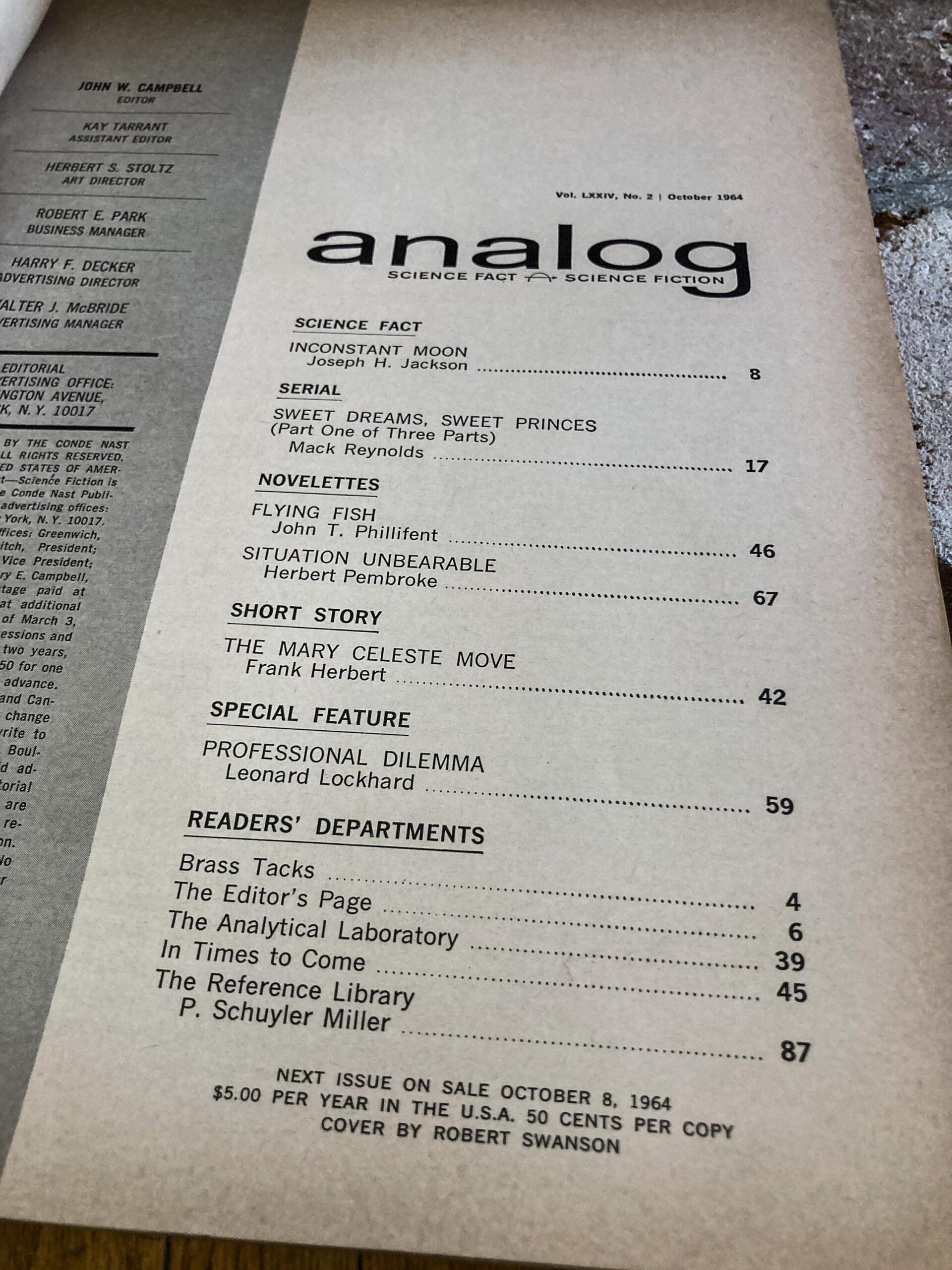
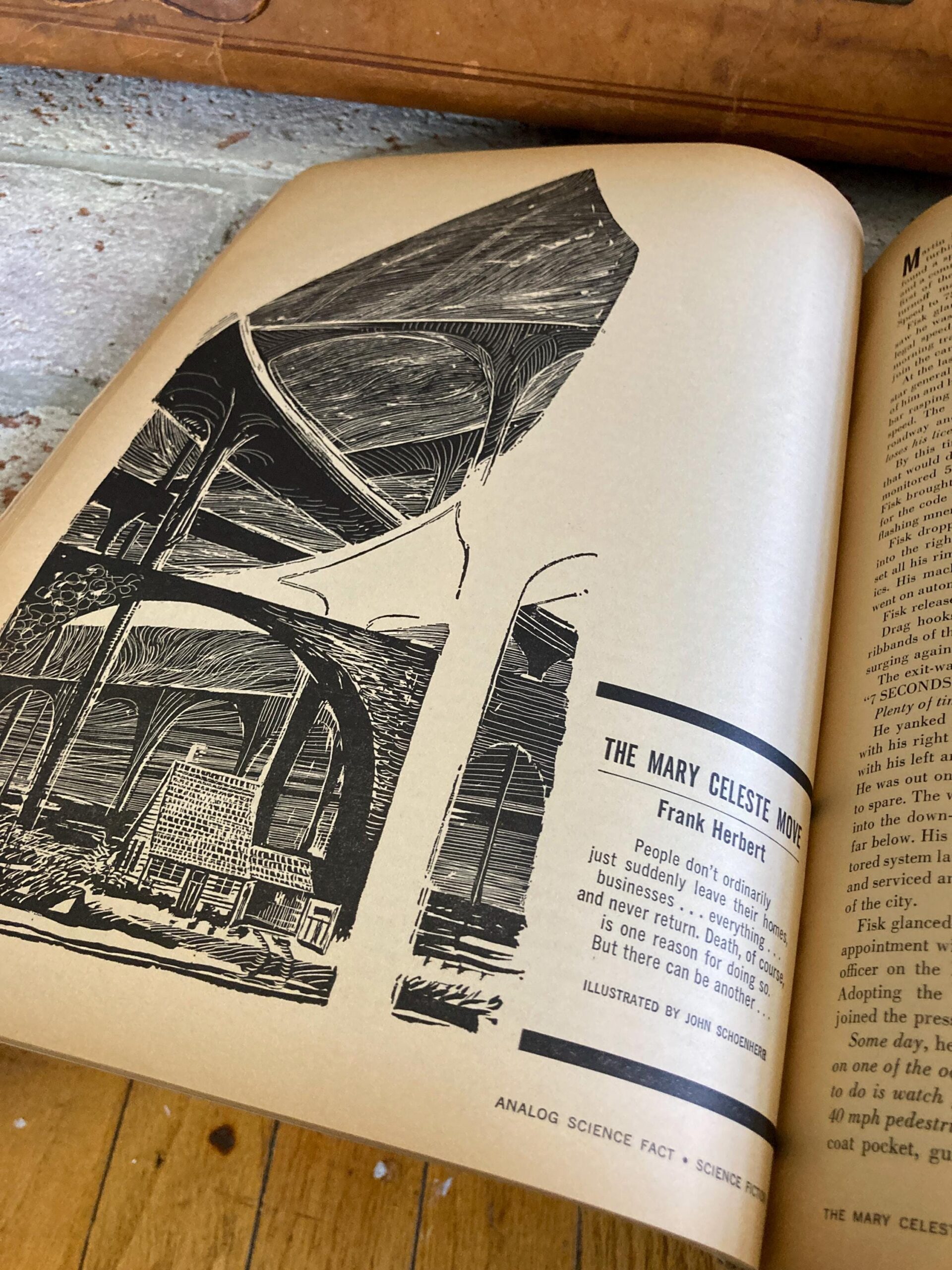
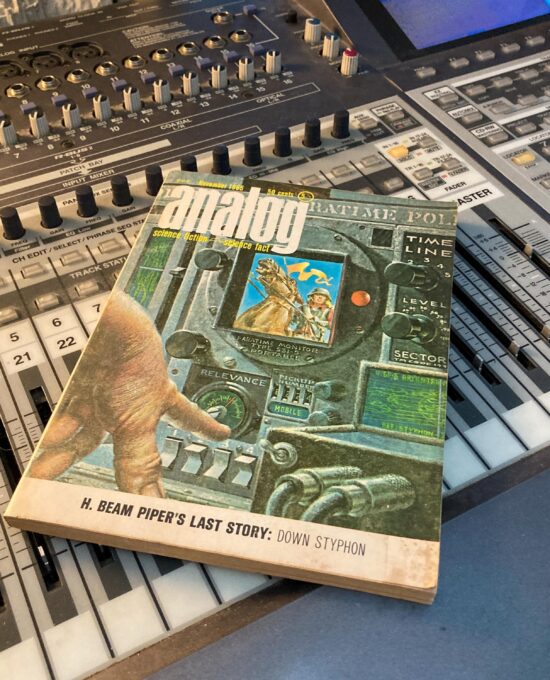
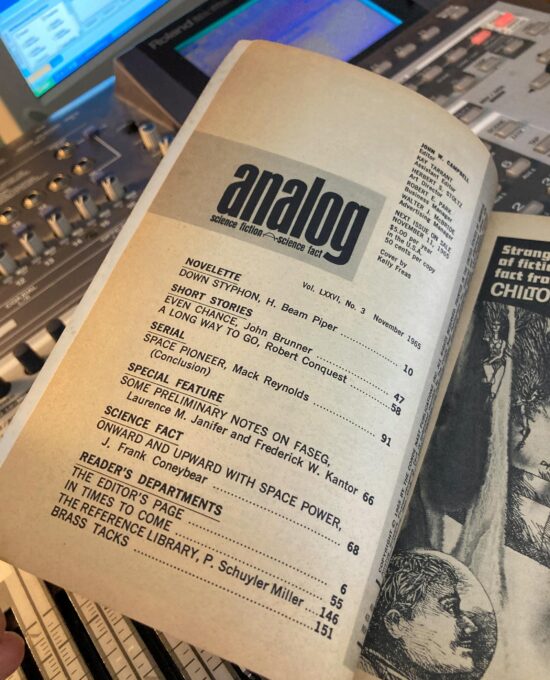
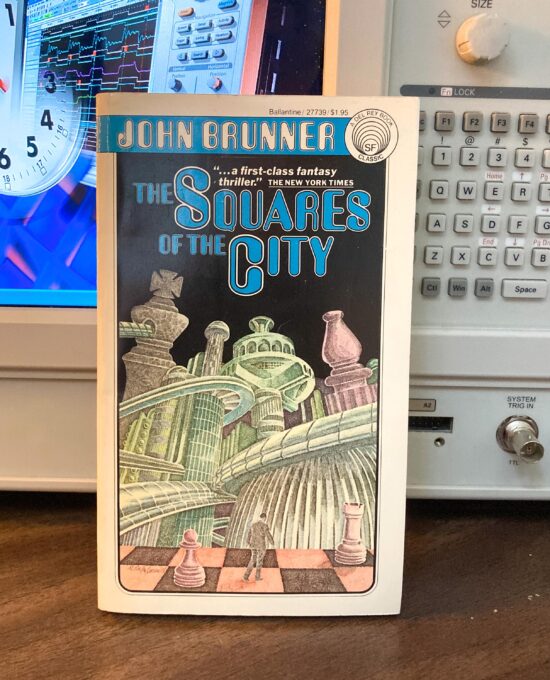
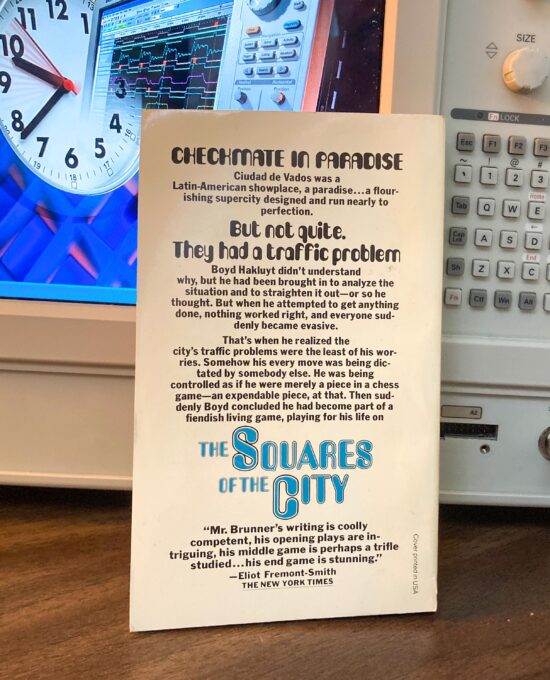
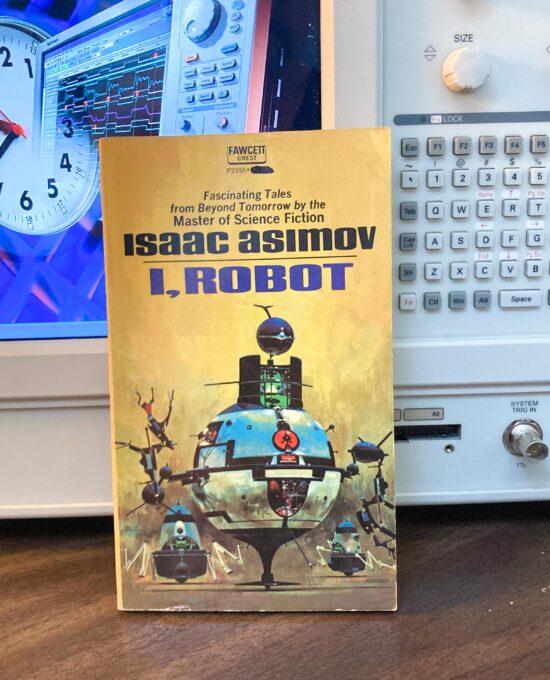
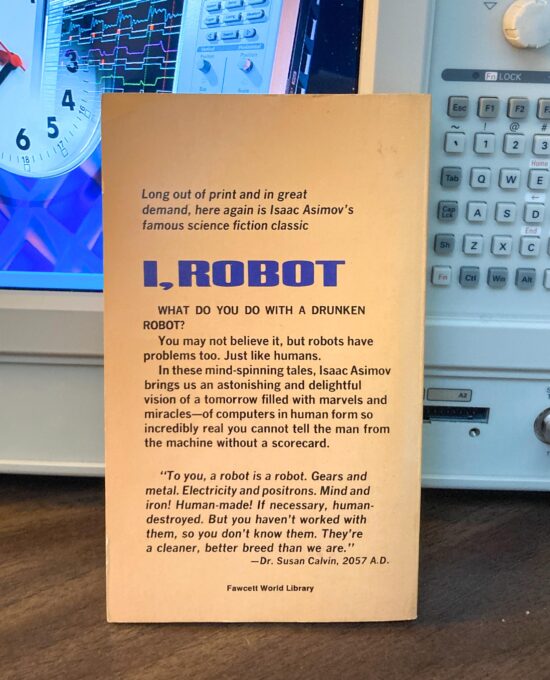
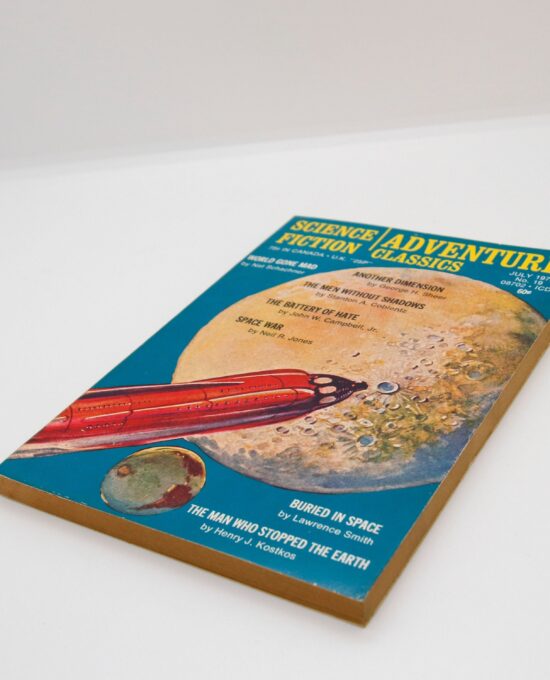
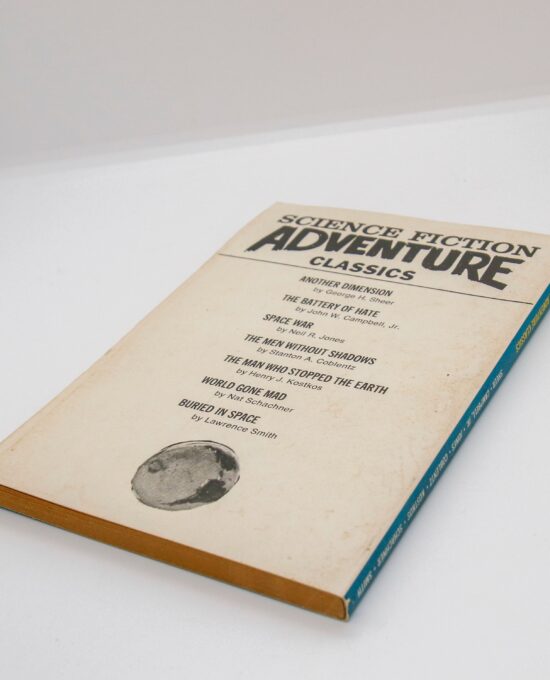
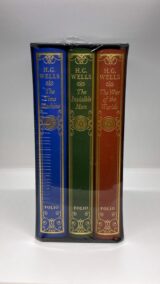
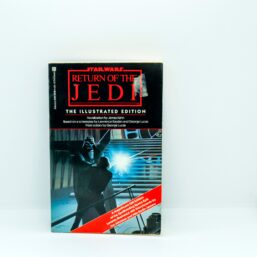
Reviews
There are no reviews yet.